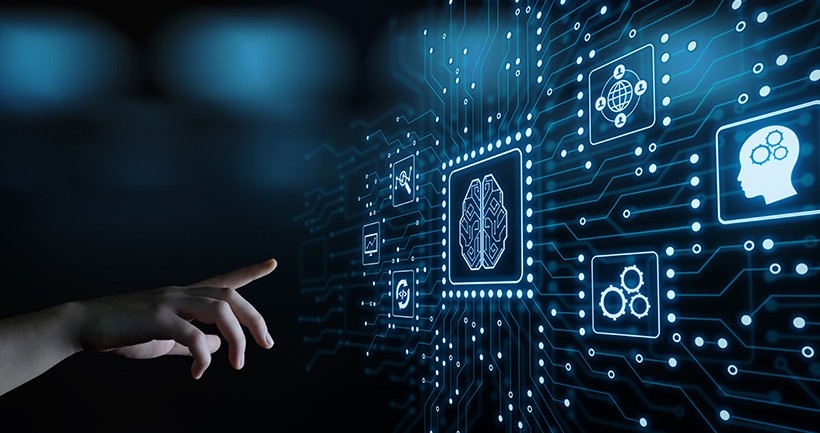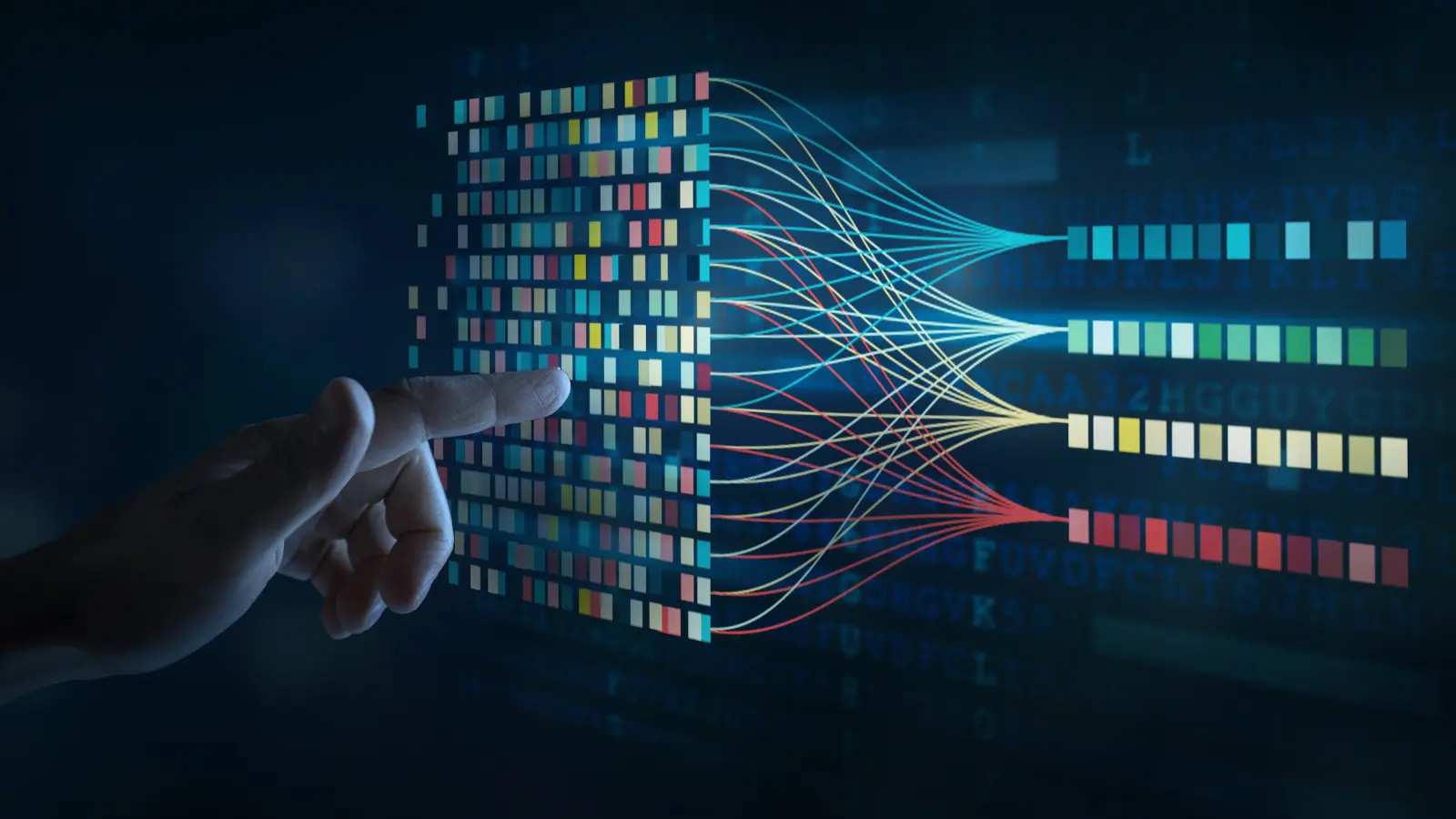Table of Contents
- Artificial intelligence vs machine learning: what’s the difference?
- Innovation in constant making
- AI and ML in banking: technology powered by change
- Artificial intelligence in banking: an unprecedented rise
- Benefits of AI and ML in banking
Artificial intelligence is taking all the industries by the storm and rightfully so, as it offers a wide range of brand-new opportunities. However, many institutions still refuse to accept that such technologies are not short-lived trends. In fact, they have been available for a while – now, they simply deserve more attention than ever before.
Artificial intelligence vs machine learning: what’s the difference?
In general, whether people use the term “artificial intelligence” or “machine learning”, they tend to refer to the same group of innovative technologies so eagerly praised by IT pioneers. This concepts, however similar, have a slightly different meaning.
Artificial intelligence is an umbrella term containing both machine learning and automation allowing for reacting to previously planned scenarios. It is a term describing a computer capable of mimicking human behavior and reasoning in a way that allows the program to make concise and correct decisions.
Machine learning, on the other hand, is basically applying algorithms to data to teach the program to predict the outcome of particular actions. The process does not involve any human support. The code used in machine learning can later on reveal patterns in data, produce forecasts and, as a result, power up applications, programs and accompanying operations. In other words, a computer can become artificial intelligence thanks to the use of machine learning.

Innovation in constant making
Despite its minor differences between artificial intelligence and machine learning , both are generally thought to offer a wide range of innovations capable of revolutionizing any industry, just like the Internet once did. However, in contrary to popular opinion, such technologies are not a new addition to the digital world. In fact, the existence of such solution has been predicted years ago by none other than Alan Turing, who set the base for its creation with invention of the very first computer. Still, the artificial intelligence has been brought to life decades later, when in 1956 the term was created by John McCarthy as a result of Dartmouth Conference. In the same time, the first program capable of mimicking human logic was presented by Allen Newell, Cliff Shaw, and Herbert Simon, followed shortly by the introduction of artificial neural network by Frank Rosenblatt. Since then, the development of artificial intelligence and its elements was only accelerating, resulting in its unprecedented expansion.
AI and ML in banking: technology powered by change
Even though AI has a long history, many people now ask themselves: if artificial intelligence was present on the market for decades, why is it so widely discussed and implemented right now in the banking industry? The answer to this question consists of several crucial changes in the modern world that enabled all the technologies to thrive on an unprecedented scale. Those include:
- Technological obstacles being now almost non-existent. With computers, programs and algorithms surrounding us everywhere we go, both AI and ML can reach their audiences within seconds.
- The issues of compatibility and obsolete devices being a thing of the past, thanks to omnipresent regulations, standards and norms.
- Machine learning in banking and other industries becoming simpler than ever. Nowadays, all the institutions gather millions of gigabytes of data every day, providing a perfect training ground for developing thousands of ML algorithms for any purposes. Additionally, the processing of the data is also quicker; therefore, ML programs can be created, edited and adjusted at an extraordinary pace.
- Lower costs of storing both the data and AI and ML programs. Drives, servers and, above all, Cloud storages grow in popularity, while their prices constantly drop. They also offer more reliable services, attracting companies and institutions from all the industries, banking included.
- Artificial intelligence and machine learning in banking no longer being a secret knowledge. While all the employees are able to use a computer with ease and the number of IT experts supporting the most advanced processes is growing, managing AI and ML in banking is no longer a challenge. In contrary, it has become a beneficial routine that can no longer be ignored in strategies and plans for the future.
In other words, the modern technology created a perfect ground for artificial intelligence and machine learning being implemented in all the spheres of life, including banking.

Artificial intelligence in banking: an unprecedented rise
The potential hidden in artificial intelligence did not go unnoticed. In fact, hardly a week goes by without another report on companies spending more and more money on implementation of both ML and AI in their systems. So far, artificial intelligence has become a center of operations for automotive, healthcare, retail and manufacturing industries – and financial sector is about to join this group.
Today, both artificial intelligence and machine learning is slowly introduced to the banking sector in solutions such as:
- Automated messages – notifications, information or pop-up windows triggered by customer performing a certain action.
- Multipurpose data analysis – widely used for forecasting, predicting customer’s decisions and dividing them into target audiences; however, the possibilities of data analysis can be virtually endless.
- Authentication, including liveness check and ID verification.
- Automated processes completed by the customer without human assistance.
- Support in budget management – set of transaction based functionalities like budget predictions, alerts and recommendations as far as managing subscription service.
- Personalised offers concerning bank products, partners products.
- Chatbots – thanks to AI, customers can now gain insights and advice not available before:
- remind them when free trials end and recurring charges begin
- analyze customer spending to find extra money that can automatically be set aside as savings.
However, those are just a few examples of artificial intelligence and machine learning being used in banking. Such technologies are now implemented in many other tools and systems; that is because they are more beneficial than they were thought to be when the term “artificial intelligence” was first proposed.
Benefits of AI and ML in banking
The rise of artificial intelligence in banking was the result of not only improving access to technology, but also a growing demand for additional benefits it may bring to the companies – including financial institutions. Those include:
- Lowered costs of employment caused automatically conducted processes.
- Detailed analysis and improved decision-making in the company, leading to increase in profits.
- Efficient communication based on automated messages and carefully selected target audiences.
- Availability of banking services improved by banking platforms working 24/7.
- Meeting the needs of increasingly demanding customers, who expect banks to implement convenient, safe and efficient technologies to facilitate more and more advanced processes.
However, the technology is still being developed; therefore, we have no doubts that artificial intelligence with play more and more important part in the banking of the future – the one we can see in a glimpse today.

 Polski
Polski
 Deutsch
Deutsch






